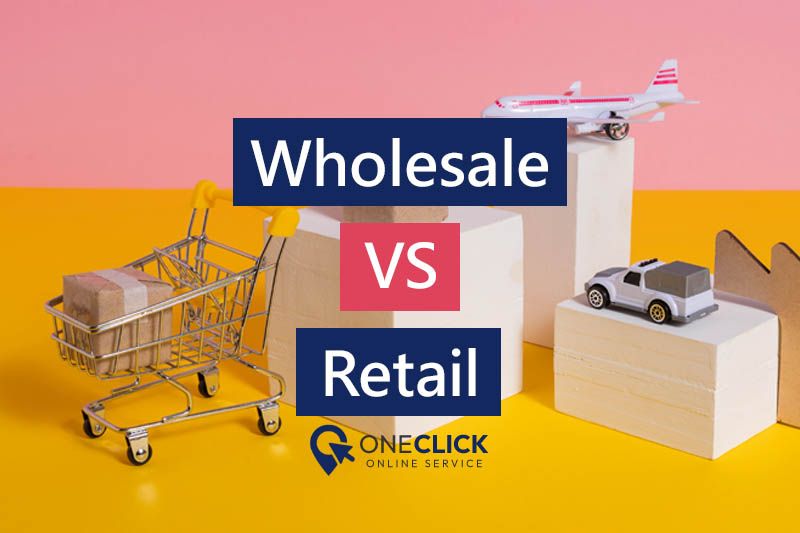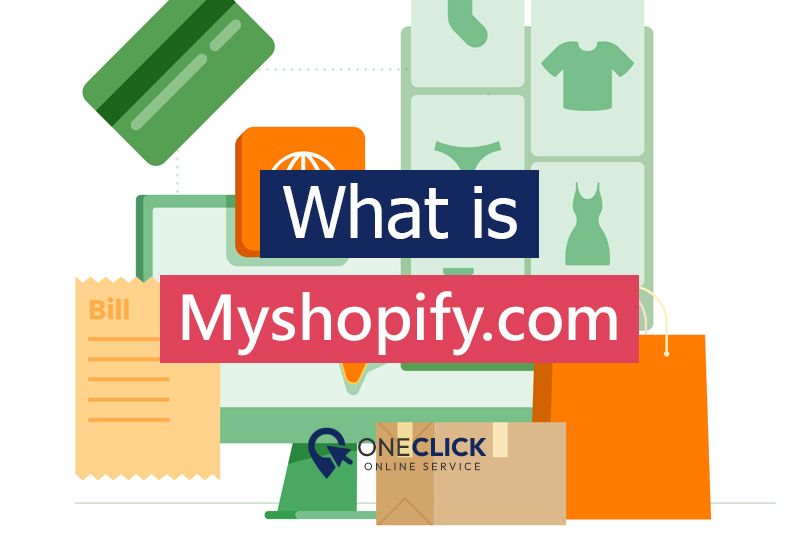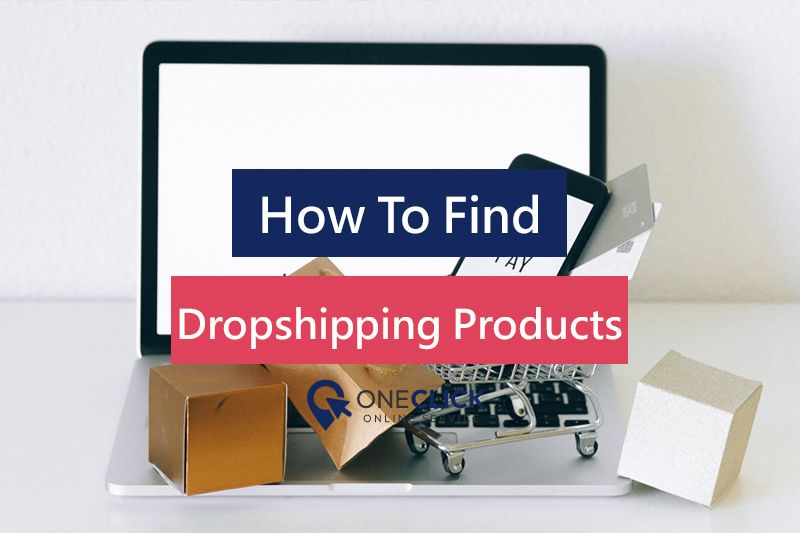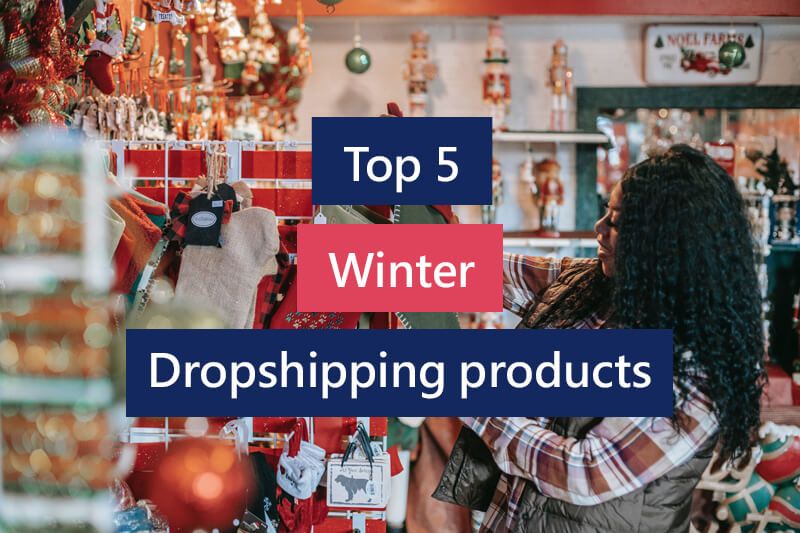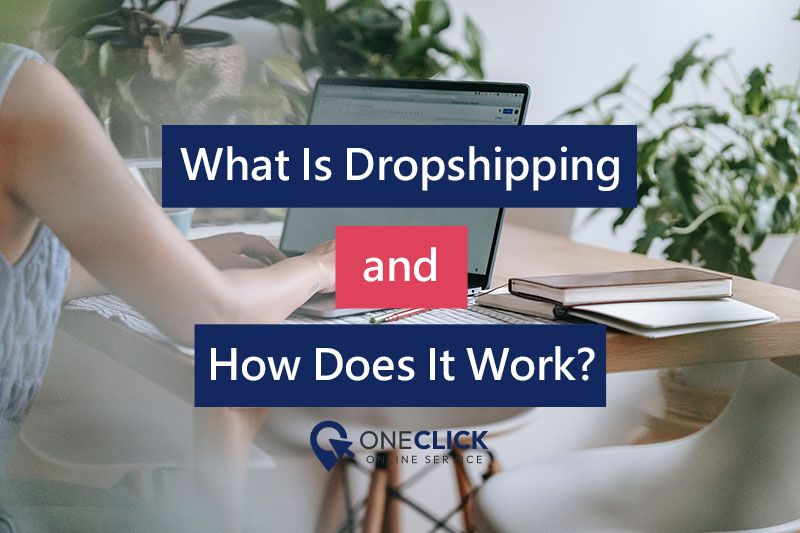8 Different Types of Ecommerce Business Models 2025
Ecommerce has revolutionized the way businesses and individuals buy and sell products and services. As the digital economy continues to expand, different ecommerce business models have emerged to meet the diverse needs of consumers, businesses, and even government institutions. These models define how transactions occur, who the buyers and sellers are, and how value is exchanged in the online marketplace.
8 Different Types of Ecommerce Business Models 2025
In this article, we will explore eight major types of ecommerce business models, breaking down their structure, benefits, and real-world applications. By understanding these models, businesses can choose the most effective approach for their industry, while consumers and entrepreneurs can better navigate the online marketplace.
1. Business-to-Business (B2B)
The B2B (Business-to-Business) ecommerce model involves transactions between businesses rather than individual consumers. This model is commonly used by manufacturers, wholesalers, and service providers who sell their products in bulk or provide business-specific services. B2B transactions often involve high-volume purchases, long-term contracts, and a more complex sales process compared to B2C models. Businesses in this sector may sell raw materials, office supplies, software solutions, or professional services to other businesses.
B2B ecommerce is crucial for industries such as manufacturing, IT services, and wholesale distribution. Unlike traditional retail, which focuses on one-time purchases, B2B transactions often involve repeat business and customized solutions tailored to the buyer’s needs. Many B2B companies operate through online portals, where businesses can place bulk orders, negotiate prices, and manage their supply chains more efficiently.
B2B Examples
- Alibaba – A global B2B marketplace connecting manufacturers with wholesalers and retailers.
- Salesforce – A cloud-based CRM provider helping businesses manage customer relationships.
- Uline – A supplier of packaging, shipping, and industrial materials for businesses.
2. Business-to-Consumer (B2C)
The B2C (Business-to-Consumer) ecommerce model is the most common and widely recognized form of online business. It involves businesses selling products or services directly to individual consumers. Online retailers, digital service providers, and direct-to-consumer brands all fall under this category. B2C transactions are generally simpler than B2B, with shorter sales cycles and fewer negotiations. Consumers can browse products, make purchases, and receive deliveries without direct interaction with the seller.
B2C ecommerce has grown exponentially due to the convenience of online shopping, personalized marketing, and the rise of mobile commerce. Businesses in this sector focus on branding, customer experience, and competitive pricing to attract and retain customers. Companies use digital marketing strategies such as social media advertising, influencer partnerships, and email campaigns to drive sales.
B2C Examples
- Amazon – The world’s largest online retailer, offering a vast range of products to consumers.
- Nike – A sports apparel brand that sells directly to consumers through its ecommerce store.
- Walmart – A traditional retailer with a robust ecommerce presence.
3. Business-to-Business-to-Consumer (B2B2C)
The B2B2C (Business-to-Business-to-Consumer) model is a hybrid approach that combines elements of both B2B and B2C. In this model, a business sells products or services to another business, which then sells them to the end consumer. This approach is common in industries where manufacturers sell to wholesalers or retailers, who then distribute the products to customers. It allows businesses to leverage existing sales networks while reaching a broader audience.
B2B2C is increasingly popular in ecommerce marketplaces, where third-party sellers use platforms like Amazon or Shopify to reach consumers. In some cases, businesses act as intermediaries, providing logistics, marketing, and customer support to bridge the gap between suppliers and end-users. This model benefits businesses by expanding their market reach while allowing consumers to access a wider selection of products.
B2B2C Examples
- Instacart – Partners with grocery stores (B2B) to deliver groceries to customers (B2C).
- Shopify – Provides ecommerce tools for businesses to sell directly to consumers.
- Amazon (Marketplace Sellers) – Allows third-party sellers to use its platform to sell to customers.
4. Direct-to-Consumer (D2C/DTC)
The D2C (Direct-to-Consumer) model eliminates intermediaries like wholesalers and retailers, allowing brands to sell directly to customers. This approach gives businesses greater control over branding, pricing, and customer experience. DTC brands often rely on social media marketing, influencer collaborations, and subscription models to build a loyal customer base.
DTC ecommerce has grown rapidly in industries such as fashion, beauty, and health products. By cutting out the middlemen, businesses can offer better pricing and maintain direct relationships with customers. This model also enables brands to collect valuable consumer data, improving product development and personalization.
D2C Examples
- Warby Parker – A DTC eyewear brand disrupting the traditional retail model.
- Glossier – A beauty brand leveraging social media for direct sales.
- Allbirds – A sustainable footwear brand selling exclusively online.
5. Consumer-to-Consumer (C2C)
The C2C (Consumer-to-Consumer) model allows individuals to sell goods or services directly to other individuals, typically through online marketplaces. This ecommerce model has gained popularity with the rise of peer-to-peer platforms that facilitate secure transactions between buyers and sellers.
C2C ecommerce is beneficial for selling secondhand goods, handmade crafts, and digital products. Platforms that support C2C transactions often provide escrow services, seller ratings, and buyer protection to enhance trust. This model is ideal for people looking to make extra income or start small businesses with minimal investment.
C2C Examples
- eBay – A major online marketplace for peer-to-peer sales.
- Etsy – A platform for handmade and vintage goods.
- Facebook Marketplace – Facilitates local buying and selling among individuals.
6. Consumer-to-Business (C2B)
The C2B (Consumer-to-Business) model flips the traditional business structure by allowing individuals to offer products or services to businesses. This model is common in the gig economy, where freelancers, influencers, and content creators sell their skills to companies.
Businesses benefit from C2B ecommerce by gaining access to a vast talent pool, flexible work arrangements, and innovative solutions from independent contributors. The rise of digital platforms has made it easier for individuals to market their expertise and connect with potential buyers.
C2B Examples
- Upwork – A freelance marketplace connecting businesses with independent professionals.
- Fiverr – Allows individuals to sell digital services to companies.
- Shutterstock – Enables photographers to sell stock images to businesses.
7. Business-to-Government/Administration (B2G/B2A)
The B2G (Business-to-Government) model involves businesses selling products or services to government agencies or public institutions. These transactions typically occur through contracts, procurement processes, or public tenders. Governments rely on private businesses for everything from IT services to construction projects.
B2G ecommerce platforms allow companies to bid for government contracts and manage transactions online. This model is highly regulated and often requires businesses to comply with strict legal and financial requirements.
B2G Examples
- Boeing – Supplies aircraft and defense technology to governments.
- IBM – Provides IT solutions to government agencies.
- SAP – Offers enterprise software for government institutions.
8. Consumer-to-Government/Administration (C2G/C2A)
The C2G (Consumer-to-Government) model refers to online transactions between individuals and government agencies. This includes tax payments, public service applications, and online government services.
Governments worldwide are adopting digital solutions to streamline administrative processes, making it easier for citizens to access services. Online portals and mobile apps improve efficiency and accessibility.
C2G Examples
- IRS e-File – Allows taxpayers to file tax returns online.
- GovPayNet – Facilitates online payments for government fees and fines.
- Estonia e-Residency – Provides digital ID services for entrepreneurs worldwide.
Ecommerce offers diverse business models, each serving a unique market segment. Whether you're an entrepreneur, a freelancer, or a large corporation, understanding these models can help you succeed in the online marketplace. Which model best suits your business goals?
Different Types of eCommerce Revenue Models
Ecommerce businesses operate under various revenue models that determine how they generate income. Choosing the right revenue model is crucial for sustainability, profitability, and long-term growth. Some models focus on direct product sales, while others generate income through subscriptions, advertising, or third-party partnerships. In this article, we’ll explore eight different eCommerce revenue models, explaining how they work and providing real-world examples of businesses using them successfully.
1. Dropshipping Fulfillment
Dropshipping is an eCommerce revenue model where a retailer sells products without holding inventory. Instead, when a customer places an order, the seller purchases the product from a third-party supplier, who then ships it directly to the customer. This eliminates the need for warehousing, inventory management, and upfront investment in stock.
Dropshipping is attractive because of its low startup costs and scalability. However, it also comes with challenges like lower profit margins, supplier dependency, and longer shipping times. To succeed, businesses must focus on niche selection, branding, and digital marketing strategies.
Examples:
- Oneclick Dropshipping: Offers an all-in-one solution for dropshipping fulfillment, including access to global suppliers, product automation, and seamless integration with popular eCommerce platforms.
- AliExpress Dropshipping: Entrepreneurs source products from AliExpress and sell them via Shopify or WooCommerce.
2. Wholesaling Model
The wholesaling model involves selling products in bulk at discounted rates to retailers or resellers rather than individual consumers. Wholesalers typically purchase goods directly from manufacturers at lower costs and sell them in large quantities to businesses that then mark them up for resale. While wholesale businesses require significant upfront investment in inventory and logistics, they benefit from higher order volumes and long-term B2B relationships. Many modern wholesale businesses now operate through B2B eCommerce platforms, enabling online transactions.
Examples:
- Alibaba: A global wholesale marketplace where businesses buy bulk products at factory prices.
- OneClick Wholesale A platform that supports wholesalers with inventory management, pricing automation, and global supplier access, ensuring smoother operations and faster fulfillment.
3. Affiliate Business Model
The affiliate business model is based on earning commissions by promoting and driving sales for third-party products or services. Affiliates generate traffic through blogs, social media, or websites and earn a percentage of each sale made through their referral links. This model requires no inventory, no fulfillment responsibilities, and minimal upfront investment. Affiliate marketing is highly profitable for content creators, influencers, and niche bloggers who can drive targeted traffic to products. However, it requires consistent traffic, SEO expertise, and trust-building to be successful.
Examples:
- Amazon Associates – Affiliates earn commissions by referring sales to Amazon.
- RewardStyle – A fashion influencer affiliate network for earning commissions on style recommendations.
- ShareASale – A major affiliate marketing network for digital and physical products.
4. Private Label
Private labeling involves branding and selling products manufactured by a third-party supplier under your own brand name. Unlike dropshipping, private label sellers own and control their inventory, allowing them to set their prices and differentiate themselves through custom branding, packaging, and marketing. This model is ideal for businesses looking to build a strong brand identity and maintain higher profit margins. However, it requires product development, inventory management, and supplier coordination.
Examples:
- Amazon FBA Private Label Sellers: Entrepreneurs sell branded products through Amazon’s fulfillment network.
- Oneclick Private Labeling: Helps businesses navigate the private label model, offering tools to source quality products and integrate branding seamlessly into the fulfillment process.
5. White Label
White labeling is similar to private labeling, but with one key difference: white-label products are generic products that multiple businesses can rebrand and sell under their own brand name. These products are mass-produced by manufacturers and sold to different retailers, who then add their own branding and packaging. This model is commonly used for cosmetics, electronics, and dietary supplements. It’s a great way to enter the market quickly without the cost of product development, but it limits differentiation since multiple brands sell the same base product.
Examples:
- Oberlo White Label Products – Dropshippers sell pre-made white-label products with custom branding.
- Cosmetic White Labeling (e.g., Generic Skincare Brands) – Many private-label skincare brands source from the same manufacturers.
- Tech Gadgets (e.g., Smartwatches, Bluetooth Speakers) – Many electronic products are rebranded versions of white-label items.
6. Advertising-Based Revenue Model
The advertising-based revenue model generates income through display ads, sponsored content, and promotions rather than direct product sales. Businesses with high website traffic, large social media followings, or strong content platforms monetize their audience by partnering with advertisers. This model is highly scalable but requires significant traffic and engagement to be profitable. Many companies combine advertising with other revenue streams like subscriptions or affiliate marketing to maximize earnings.
Examples:
- Google Ads (YouTube, Search Engine Ads) – Content creators and publishers earn ad revenue from views and clicks.
- Facebook & Instagram Ads – Platforms monetize through sponsored posts and promotions.
7. Subscription-Based Model
The subscription-based revenue model involves charging customers a recurring fee (monthly, quarterly, or annually) to access products or services. This model ensures steady revenue, customer retention, and long-term profitability. Subscription businesses must focus on delivering continuous value to maintain customer loyalty. Subscriptions are commonly used in industries like media streaming, SaaS, and product-based subscription boxes. While the model offers predictable revenue, it requires strong customer engagement and retention strategies to minimize churn.
Examples:
- Netflix & Spotify – Monthly streaming subscriptions for entertainment.
- Dollar Shave Club – A razor subscription box that delivers shaving products monthly.
- Adobe Creative Cloud – A SaaS subscription for creative professionals.
8. Freemium Model
The freemium model offers basic products or services for free, while charging users for premium features. The goal is to attract a large user base and convert a percentage of them into paying customers. Freemium models are commonly used in SaaS, gaming, and digital services, where the free version provides enough value to engage users, while the paid version unlocks additional features. Success in this model depends on conversion rates and upselling strategies.
Examples:
- Spotify – Free music streaming with ads; users can pay for an ad-free experience.
- Canva – Free design tools with a paid Pro version for advanced features.
How to Choose an Ecommerce Business Model?
Choosing the right eCommerce business model is one of the most crucial decisions you’ll make when starting an online business. Your model determines how you generate revenue, handle operations, and engage with customers. With numerous options available, from dropshipping to subscription-based models, selecting the right approach can significantly impact your profitability, scalability, and sustainability.
In this article, we’ll guide you through the key factors to consider when selecting an eCommerce business model, helping you make an informed choice based on your goals, resources, and target market.
1. Understand Your Strengths and Resources
Assess Your Skills and Expertise
Start by evaluating your own strengths, experience, and interests. If you have a background in marketing or content creation, an affiliate marketing model or advertising-based model could be a great fit. On the other hand, if you have experience with product design or brand building, a private label or wholesale model might be more suitable.
Consider Available Resources
Different business models require varying levels of initial investment, operational management, and technical knowledge. For instance:
- Dropshipping requires minimal investment and infrastructure but demands strong digital marketing skills.
- Wholesaling demands a larger upfront investment in inventory but allows you to sell at higher margins.
- Subscription-based models rely on customer retention and delivering continuous value, making customer service a key skill to develop. Understanding your available resources—such as time, capital, and skills—will help you pick a model that aligns with what you can realistically manage.
2. Consider Product Type and Niche
Physical vs. Digital Products
The type of product you plan to sell plays a big role in your choice of model. Physical products (like gadgets, clothing, or furniture) often work well with dropshipping, private labeling, or wholesaling models. On the other hand, digital products (eBooks, software, online courses) may be better suited for a subscription-based model, freemium model, or affiliate marketing.
- If you want to create a unique product or a personalized brand, the private label model may be ideal.
- If you're interested in scaling quickly with minimal risk, dropshipping or affiliate marketing might be a better option.
Find a Niche with High Demand
Your niche should be a crucial factor in deciding the right eCommerce model. Market research is key:
- High competition may lead you to models like affiliate marketing where you focus on selling established products rather than creating your own.
- A specific niche (e.g., sustainable products, organic skincare) may lend itself to a subscription box or private label model, where your ability to differentiate is crucial.
Understanding the market demand and target audience preferences can significantly influence how you approach your business model.
3. Evaluate Profit Margins and Scalability
Profit Margins
Each business model has its own profit margin potential. For example:
- Dropshipping typically has lower profit margins (since suppliers set the prices), but it comes with low overhead costs and scalability.
- Private label and wholesale models allow for higher profit margins, but they require more investment in inventory, and handling stock can involve additional costs. Consider whether you’re aiming for a high-volume, low-margin business or a low-volume, high-margin business.
Scalability
Scalability is a key consideration when choosing a model. If you want a business that can grow rapidly without needing a significant increase in effort, dropshipping or affiliate marketing might be good fits, as they both rely on automated processes. On the other hand, private labeling or wholesaling may require you to handle more logistics, but can also offer a more sustainable long-term growth strategy with higher control over inventory and customer experience.
4. Level of Control and Customer Relationship
Control Over Product and Brand
If building a brand and creating a unique product offering is important to you, private labeling or white labeling are great choices because they provide more control over the product and customer experience. These models allow you to design the branding, packaging, and marketing. Conversely, dropshipping and affiliate marketing give you less control over product quality, delivery times, and the customer experience, since you're relying on third parties.
Customer Relationships
If fostering strong customer relationships is important to you, subscription-based models can be a good choice. They offer recurring revenue while allowing you to build a direct connection with customers through loyalty programs, personalized offers, and high-touch customer service. Wholesaling often has less direct interaction with end customers since you’re dealing primarily with other businesses.
5. Assess Market Trends and Future Viability
Evaluate Long-Term Trends
Make sure to consider market trends and how they may impact your business in the long run. For example:
- Subscription boxes have become increasingly popular, especially in niche markets (e.g., pet products, gourmet foods), offering a stable recurring income stream.
- Freemium models are growing in popularity in industries like SaaS, gaming, and online tools. Understanding the future viability of a business model will help ensure you're making an investment that will continue to grow as consumer behavior and technology evolve.
6. Test and Validate Your Idea
Before fully committing to any eCommerce business model, consider validating your idea through smaller-scale experiments:
- For dropshipping, try selling a few products through an established platform like Shopify or Wordpress to gauge demand.
- For subscription models, run a pilot program to measure interest and customer retention rates before scaling.
- Test with a minimum viable product (MVP) in models like private labeling to see if the market responds well to your branded products.
Choosing the right eCommerce business model involves evaluating your skills, resources, and goals while considering product type, scalability, profit margins, and customer relationships. By carefully assessing these factors, you can select a model that aligns with your vision and gives you the best chance for success in the competitive eCommerce landscape. Take time to research your options, test your ideas, and adapt as necessary, knowing that the business model you choose today can always evolve as your business grows.
FAQs About Ecommerce Business Models
1. What is the best eCommerce business model for beginners?
The best eCommerce business model for beginners depends on available resources and skills. Dropshipping is often the easiest to start because it requires minimal upfront investment and no inventory management. Affiliate marketing is another low-risk option that allows beginners to earn commissions by promoting products. However, if you have a budget to invest and want more control over branding, private labeling or print-on-demand can be great options.
2. Which eCommerce business model is the most profitable?
The most profitable eCommerce business models typically offer high margins and scalability. Private labeling and wholesaling tend to have higher profit margins because businesses buy in bulk and control pricing. Subscription-based models also generate consistent, recurring revenue, making them highly profitable over time. However, dropshipping and affiliate marketing can be profitable if you focus on high-demand, low-competition niches and have strong digital marketing strategies.
3. Can I combine multiple eCommerce business models?
Yes! Many successful eCommerce businesses use a combination of models. For example, a business can start with dropshipping to test products before switching to private labeling for more control and higher margins. Another example is combining subscription services with direct product sales to generate both one-time and recurring revenue. Mixing models allows businesses to diversify income streams and scale more effectively.
At Oneclick Online Service, we pride ourselves on providing high quality products for dropshipping at competitive prices.
To begin your journey with Oneclick Online Service and take advantage of our exceptional offerings, simply fill out our contact form to communicate your specific requirements to our team. Alternatively, you can create an account on Oneclick Dropshipping right away to access our full catalog of products and start exploring the benefits of partnering with us. From seamless order fulfillment to reliable customer support, we are committed to providing you with the tools and resources you need to succeed in the competitive world of dropshipping products.




